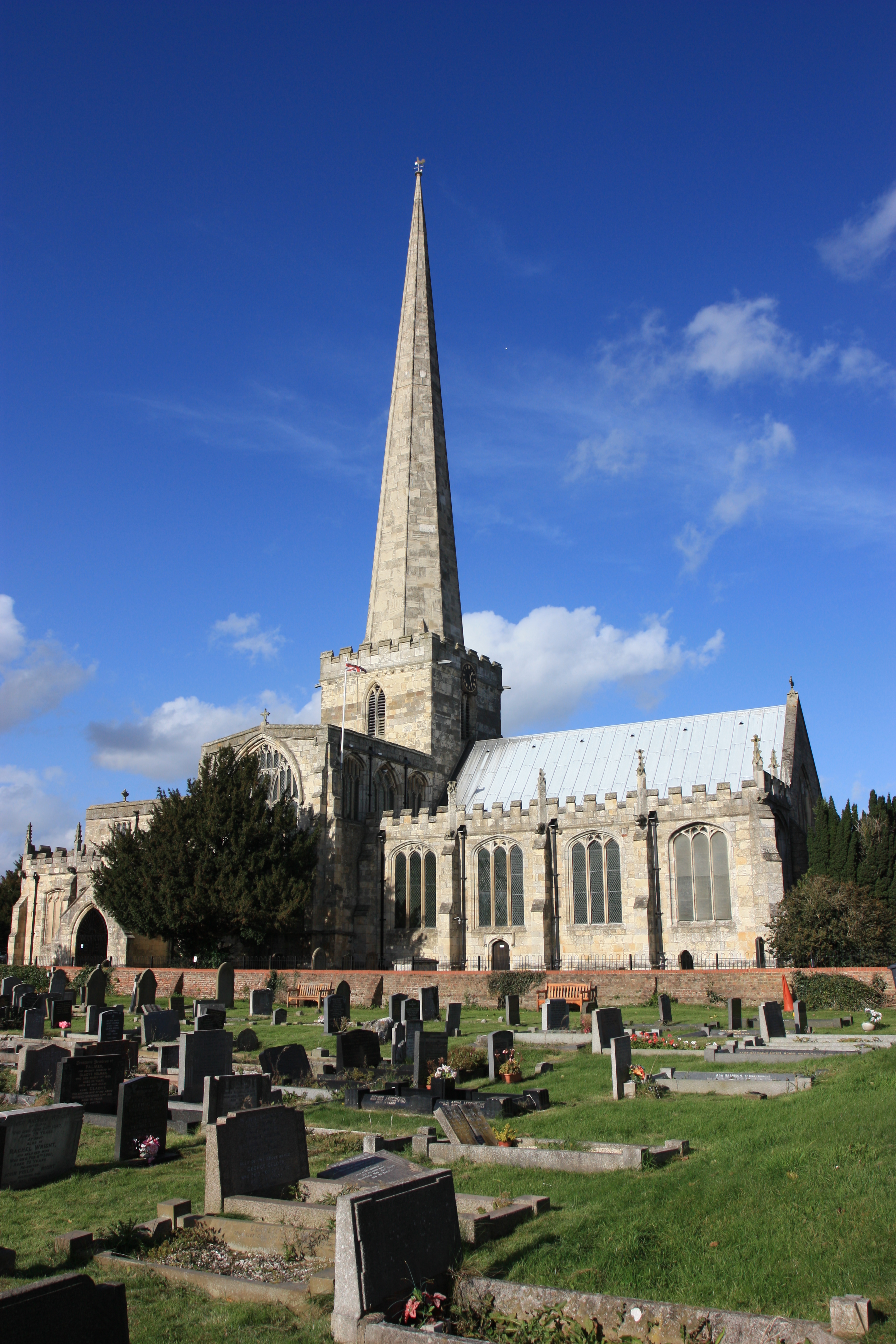Hemingbrough, St. Mary

Hemingbrough Tower, Image copyright Peter Church
Hemingbrough, St. Mary
The church is unusual in many respects. For a small village to possess such a magnificent church is unusual.
As a building it is unique.
The reasons for its importance go back to the time of the Norman conquest when William gave it to the Priors of Durham.
It was a richly endowed Rectory and, under a licence given by Henry VI in 1426, the Priors of Durham established a college here.
It remained collegiate until its suppression by Henry VIII in 1534.
During that time enormous alterations were made to the church fabric.
In the church are examples of the architecture of every period from the 12th to the 20th century, the earliest being at the Eastern end of the nave.
The church is cruciform with a central tower, North and South transepts, nave, aisles, chancel and vestry, mainly built in the 13th century.
The unique 126 feet spire was built between 1416 and 1446 on the existing 63 feet high tower, thus providing the church's remarkable and famous feature.
Internally the church is equally impressive as, among its many features are a tub shaped font of 1180 and the oldest misericord in England which dates from around 1200.
The woodwork also provides much interest from its pulpit (1717), carved pew ends (16th to 18th century) contrasting with the work of Kilburn (1950) in forming the war memorial chapel,
which also features a modern armed forces memorial window by Harry Stammers (1946).
There is also excellent 19 th century stained glass in the west window.
Following four years of substantial restoration work (costing in excess of £400,000) there is now in the North transept the top section of the spire which, because of its dangerous condition,
was renewed in 1989. Within the same area is a finely carved limestone table and a 15th century stone cadaver.
All in all a most interesting church which thoroughly justifies its inclusion in "The Beauties of England and Wales", a book published in the 17th century.
Bell ringers at Hemingbrough are very visible as the ropes descend to floor level and the ringers "perform" at the cross between the nave and the chancel.
The six bells are housed in a 13th century belfry with five bells cast by E Sellars II of York being installed in 1730 and a sixth, the treble, added in 1907.
The five bells were made from recasting four bells which were probably two hundred years old in 1730. Change ringing commenced in 1907 thanks to the competence and enthusiasm of the Vicar at that time.
The Rev. W.P. Wright (Vicar 1905-1915) had been training local young men in readiness for the six bell peal.
During that first week, following the installation of the treble, nine 720's were rung with the help of experienced ringers from Selby Abbey.
Although 720's on handbells had been rung by local ringers, the very first 720 on the tower bells by local ringers was not achieved until 23rd October 1907.
It is remarkable that for a period of at least thirty years, six villagers rang the bells twice each Sunday, attempting and usually succeeding to ring 720 before the service.
These ringers were three brothers Matthew, John and Edwin Tune, who rang with Arthur Hudson, Gus Hatfield and George Terry.
The connection with the Terry family continued with a nephew of G.C. Terry, namely William T Stoker who began ringing in 1946.
Widely known as "Yog" Stoker, he was responsible for the tower for many years.
In his determination to keep the bells ringing William spent many years training young ringers.
Currently one of Williamís former pupils is a regular ringer at the church.
In 2018 the church has a small band of local ringers, supplemented for weddings with ringers from local towers.
Bell ringing practice is held on the first and third Tuesday of the month from 7:30pm to 9:00pm (not during winter months).
The inscriptions on the bells are:
2nd - INVOCO DEUM
3rd - IN ALTISSIMIS
4th - SOLI DEO GLORIA
5th - TE DEUM LAUDAMUS
Tenor - CUM SONUM MEMENTO MORI
The peal is in F# and the tenor weighs 10-1-15 Cwt.
Click here to download the above text.
|

